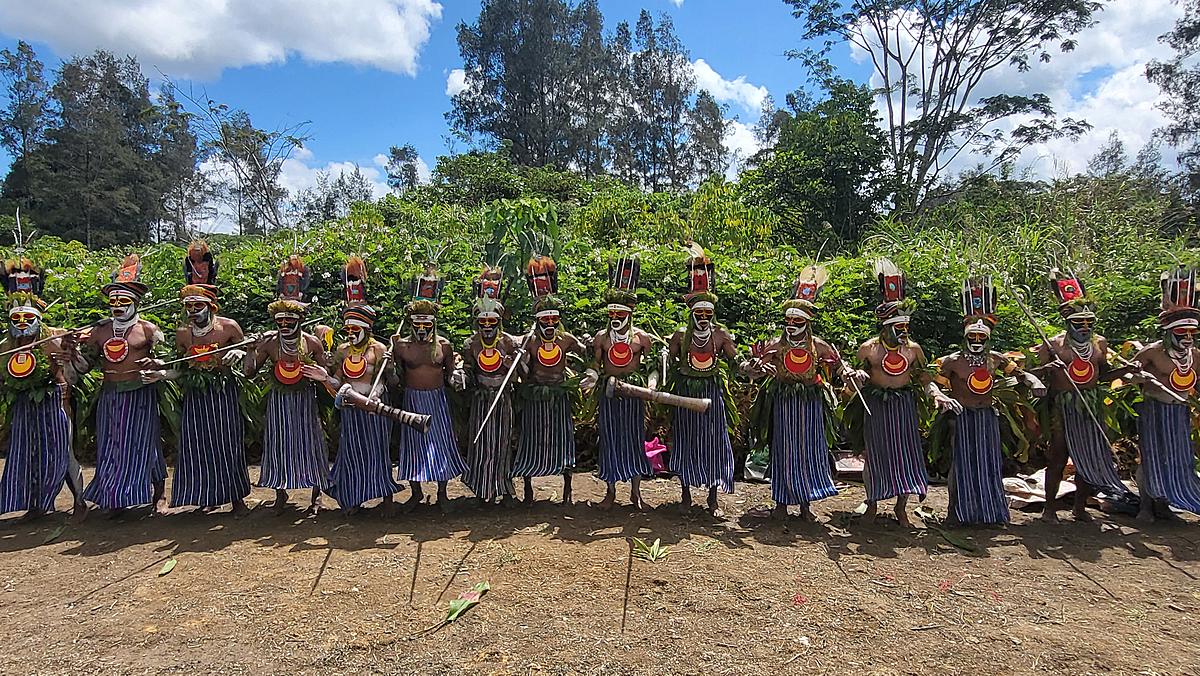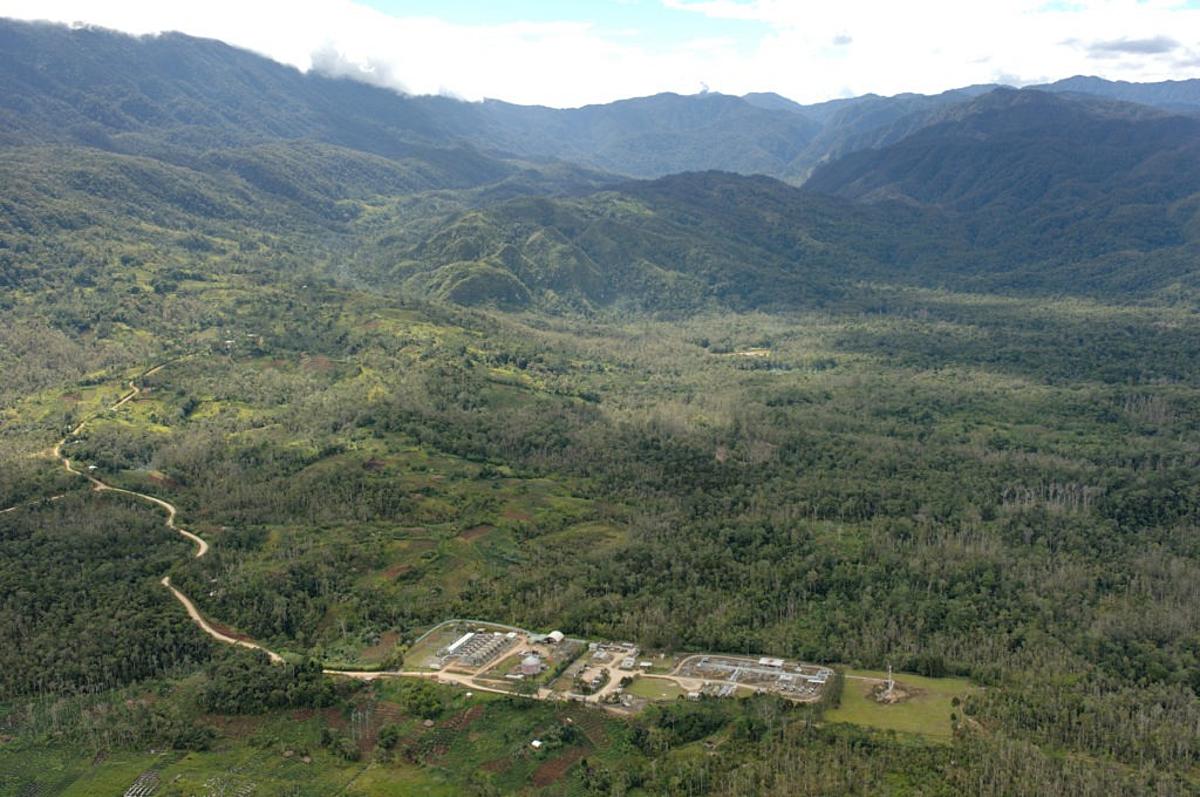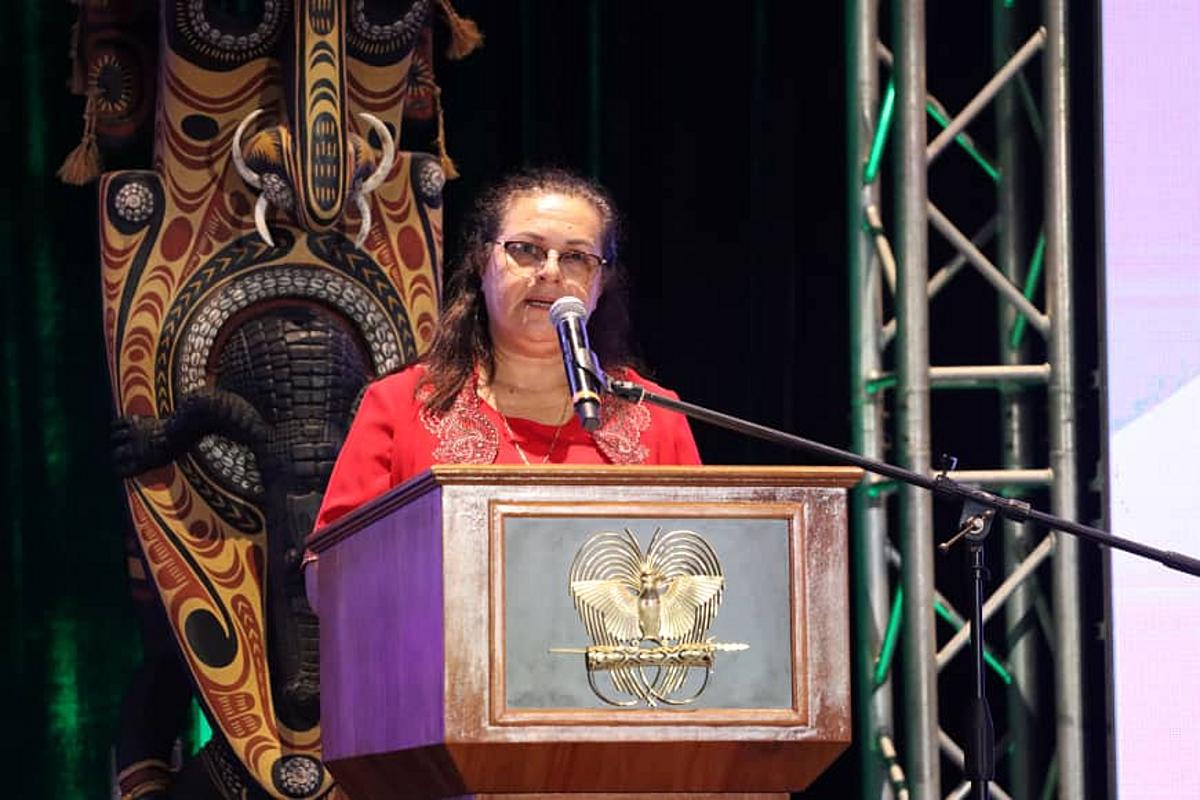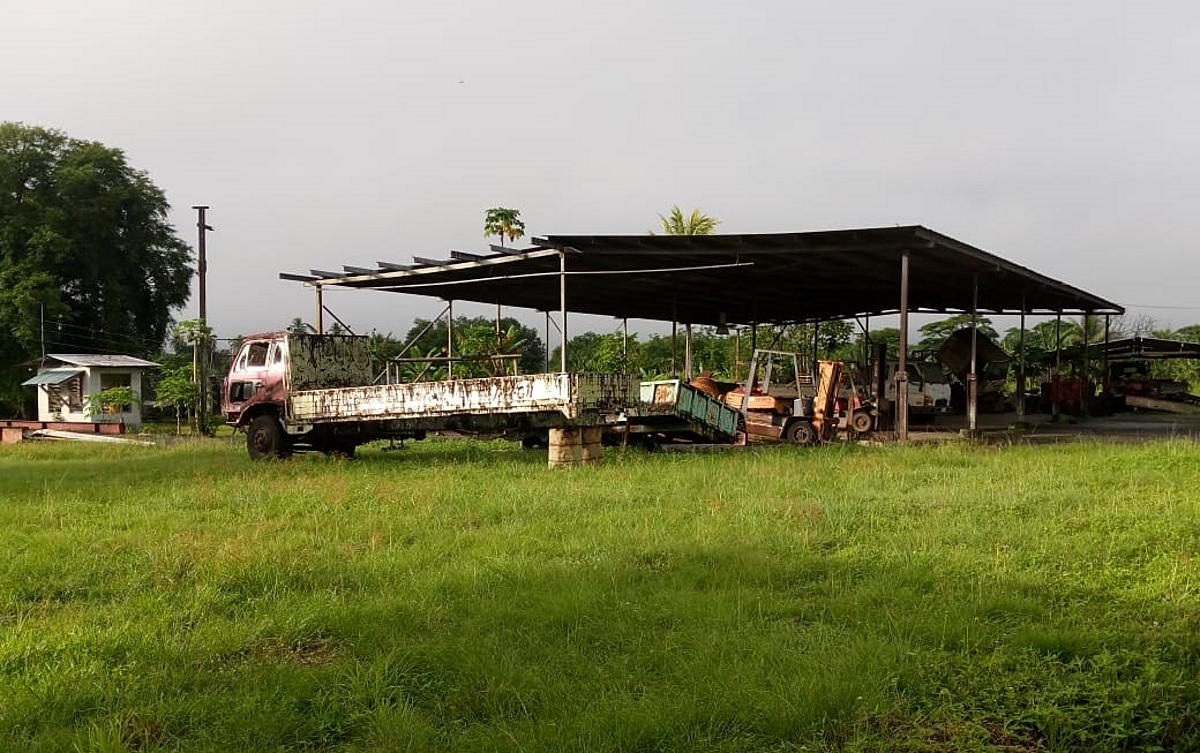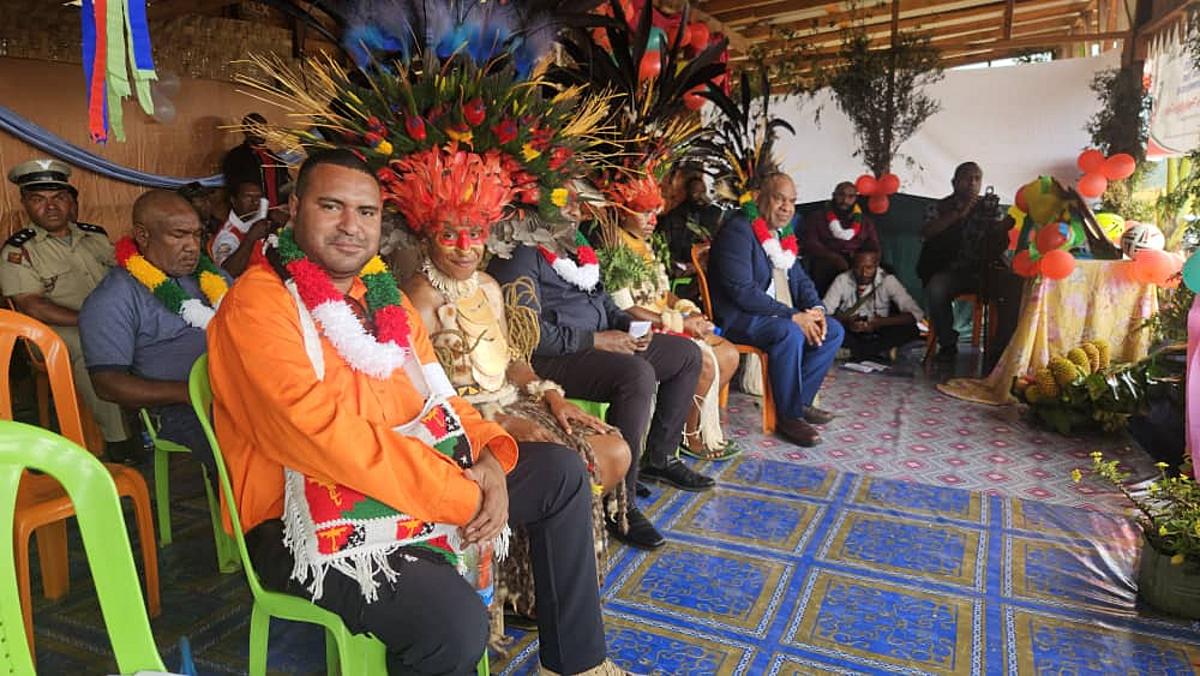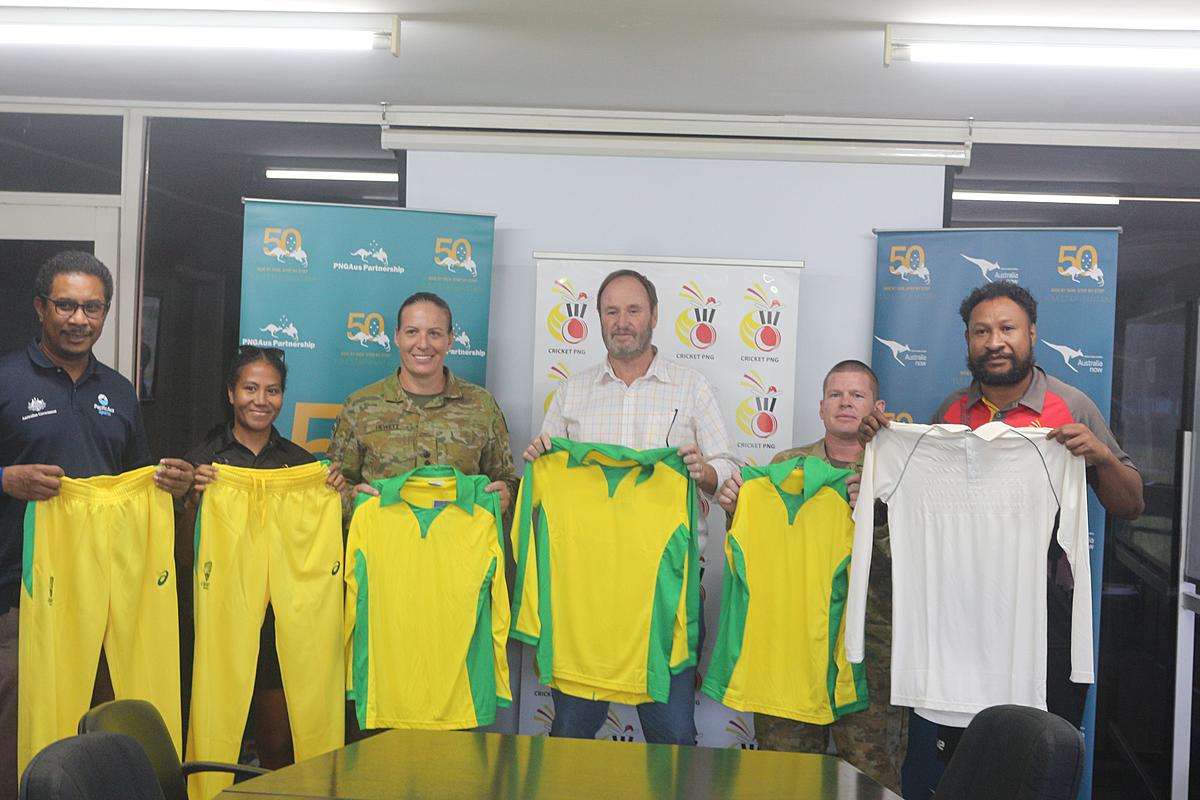By Roger Kewa Avinaga
Like any other industries that have been impacted by the COVID-19 in 2020, the mining industry has been impacted by the pandemic. The industry has been confronted with numerous challenges. The operations of the mines shut down, some mines have suspended or scaled down operations while others have gone into isolation mode. On the commodity markets, like it has been for many commodities around the world the supply sources have been affected and also the demand for this commodity has decreased. While some mines have resumed operations they have done so under “new normal”. As a result of all of these, employees and dependents have been affected as the sources of survival for many have been cut off as a because of the mine shutdowns, suspension or scaled down of mine activities. COVID-19 clearly caught the world by surprise. No one predicted the pandemic of such a magnitude would impact the world. In any mine operations identification of risks and risk management is part and parcel of operations but who knows how many mining companies actually had COVID-19 in their risks profile and management. The real story is the pandemic caught everyone by surprise, no doubt about it. The fact remains – COVID-19 has left both short term and long terms impacts on the mining industry. It will require new sets of measures to respond to the impacts left by the pandemic. It will require the efforts of the various parties including the government, companies, investors and other parties to address the impacts left by the pandemic.
THE MINING INDUSTRY IN PAPUA NEW GUINEA
The mining industry in PNG has been in existence for many years. It has become a pillar for the country’s economy, source of revenues, infrastructure development, development of rural communities, employment opportunities, among others. The country extracts a wide variety of metals, which is developed and exported overseas. The most common metals produced in Papua New Guinea include copper, gold and silver. Interestingly, some of the rare metals have been discovered and mined in PNG such as nickel, cobalt, chromium, iron and platinum. Active exploration is going on in parts of the country which has the potential for further discoveries of commercial quantities. However, many parts of the country are complicated by the rough and rugged terrain which makes exploration for minerals difficult. The harsh environment complicates the setting up of the mine sites as well as establishing infrastructure for developing the resources.
OPERATING MINES IN PAPUA NEW GUINEA
PNG has a well established mining industry on account of several world class mines operating in the country and mining dates back to 1920s and 1930s. Certain mines such as Misima Mine has exhausted its production life span. The Panguna Mine in the Autonomous Region of Bougainville (AROB) has been closed down since the start of civil war more than two decades ago. The mine is yet to be re-opened. Several operating mines in PNG include the following;
(a) Lihir Gold Mine
Lihir Gold Mine has been producing gold and it is the country’s largest gold producer. The mine is located in New Island Province and is operated by Australian gold miner Newcrest Mining Limited having taken over in 2010 at the estimated cost of $9 billion. Employing approximately 5,000 employees the mine is a source of employment, revenue, infrastructure development and community development, among others. The mine life expected is 20 plus years. In December 2019, the Lihir mine reported estimated reserves containing 320Mt of combined proven and probable reserves grading at 2.3g/ of gold (Au), with in-situ gold of 23Moz. It has been further reported that in June 2019 Lihir mine achieved the target of 15Mtpa. The mine had a production of 933,000oz in 2019 and 187,245oz in the March 2020 quarter. The Lihir Gold Mine remains an important producing mine for Papua New Guinea.
(b) Ramu Nickel-Cobalt Mine
The Ramu NiCo mine produces a rare metal called nickel-cobalt. The project first commenced production in 2012 with a designed capacity of 32,000 tonnes per annum for nickel and 3,200 tonnes per annum for cobalt. The mine is operated by a Chinese company MCC (Metallurgical Corporation of China). The project was developed with a total investment cost of US$2 billion. The mine is a source of revenue, employment and revenue generation for the country.
However, the mine has been subject to environmental concern caused by dumping of mine waste into the river systems in the area.
(c) Porgera Gold Mine
The Porgera Mine is located in Enga Province. The mine produces gold and silver producing an estimated half a million ounces of gold annually. The Porgera mine before the takeover by the Government in 2019 was owned 95% by Canadian company Barrick and Chinese company Zijin. The 5% has been owned by the Enga Provincial Government.
However, on the expiration of the Special Mining Lease in 2019 the Marape led Government decided not to renew the license, which led to the ceasing of the mine’s operation. Currently, the mine has been closed down causing unemployment, ceasing revenue generation, among others. COVID-19 further prolonged the shut down of the mine.
In an unprecedented move, the Special Mining Lease was then awarded to the State-Owned Enterprise (SOE) Kumul Minerals Holdings Limited (KMHL) by the regulator - Mineral Resources Authority (MRA). This has caused further issues for Barrick and some factions of the landowners. Also, across the globe, the Government’s action has sent wrong signals that the Government has taken over the mine. The investors will clearly think twice before they can invest in the country.
However, the Marape administration maintains that its actions are for the interests of greater public ownership of the mines as well as oil and gas resources development.
Disappointed by the Government’s decisions and actions the gold mine operator Barrick has taken the State to court over its actions. Whilst pending the outcome of the court decisions, and on a recent note, meetings between Prime Minister James Marape and the boss of Barrick has taken place signalling way forward for the mine. However, the details of getting the mine re-opened will be finalised between various parties including Barrick, Government, Kumul Minerals, Landowners/Enga Provincial Government, etc. It will be interesting to see what transpires from this in relation to equity split, operatorship, etc. The Porgera Mine is a source of employment for many and its closure has impacted the employees and their dependents. The sooner the parties resolve the issues and re-open the mine the better it is for all parties and the country as a whole.
(d) OK Tedi Mine
The OK Tedi Gold Mine was opened in 1982 by the previous owner BHP of Australia. The mine produces three of the common metals including copper, gold and silver. The Mine is located in the Star Mountains of the Western Province. The mine is operated by OK Tedi Mining Limited and the mine is owned 100% by the State, having taken over the mine in 2013 from the previous owner. The production life of the mine was estimated to end in 2025. However, further work is also carried out on resources upgrade which could expand the mine life further.
The mine was previously owned and operated by BHP Billiton, an Australia mining giant. However, due to environmental concerns over the Fly River systems the company left and handed over the mine to the State as a “compensation package”. BHP may have escaped legal case which could have cost the company more for environmental damages. BHP would have been subjected to serious legal challenge for the mining giant. The company at the time channelled the mine waste directly into the river systems that run into OK Tedi and Fly River.
Since the take over by the Government the mine is a source of infrastructure development, revenues, employment, community development and social development especially, in the project host Western Province. In 2002, BHP Billiton withdrew from the mine and established development fund of the benefits of the people of Papua New Guinea. This fund is called PNG Sustainable Development Program Limited. This fund has become subject of dispute between the former Prime Minister Peter O’Neill and the Chairman of PNG Sustainable Mekere Morauta, especially over the ownership of the fund.
The OK Tedi mine is currently placed under the State-Owned Enterprise Kumul Minerals Holdings Limited.
(e) Hiden Valley Mine
This mine is owned 100% and operated by the South African mining company Harmony Gold Mining Company Limited which also owns 50% of the upcoming Wafi-Golpu mining project. The Hiden Valley gold project located in Morobe Province started first gold production in 2009. Since then it has been producing gold and silver. By comparison, this mine is a small mine in relation to Porgera, Lihir and OK Tedi but the mine is a source of revenue generation, employment, infrastructure development and community development.
(f) Kainantu Gold Mine
The Kainantu mine is owned by K92 Mining which produces gold. This mine was previously owned by Highlands Pacific and Barrick Gold from 2006 to 2009. This project has been in operation since 2006. This mine is located in Kainantu District of the Eastern Highlands Province. The new operator of the Kainantu Mine has been responsible for recruiting 800 employees and also serves as a source of revenue and infrastructure development.
It has been reported that the mine produces higher gold grades resulting in strong financial results, including record net cash and throughput following the commissioning of stage 2 plant expansion. In its quarterly report, the company reported that a quarterly revenue of US$35.6 million, which is a 70% increase from Q3 2019. A record tonnage of 64,702 tonnes treated which is a 102% increase from Q3 2019.
The mine has put in place a proactive and focused management of COVID-19 and continues to operate the mine and also has strong preventive and response plans.
(g) Simberi Mine
The New Ireland Province does not only host the Lihir Gold Mine but also host Simberi Gold Mine. The mine is operated by St Barbara Limited through a Mining Lease (ML 136) which covers most of the eastern half of Simeri Island. Compared to Lihir Simberi is not a large mine but it is able to be the sources of revenues, employment opportunities, rural development especially in the northernmost islands of New Ireland. The mine focuses on epithermal gold in oxide and sulphide deposits. It has been reported that the mine life of Simeri mine has been extended to 2035 and it is an open-pit mine.
IMPACTS OF COVID-19 ON MINING OPERATIONS AND THE ECONOMY IN PAPUA NEW GUINEA
The COVID-19 measures that were applied in the country during the height of the pandemic including the State of Emergy (SOE), social distancing, limited movements, and other restrictions imposed to minimise the spread of pandemic clearly impacted the operations of the mine operations and activities in Papua New Guinea. Given the country’s connectivity to the outside world, there is no way PNG would have avoided contracting COVID-19. In fact, the first recorded case in Papua New Guinea was an employee of a mine. The OK Tedi Mine closed down when it reported seven COVID-19 cases at the mine site. The Lihir Gold Mine also had one COVID-19 case.
The OK Tedi mine operation was shut down as a result of its employees contracting the virus. Financially, the closure was anticipated to cost the mine an estimated K100 million. The mine employees were laid off as a consequence. However, the operation resumed following weeks of the mine shut down. The OK Tedi Mining Limited announced a temporary closure of the mine. It announced a 14-day suspension of the operations while contact tracing and isolation procedures with the intent to minimise any spread of the infractions. Operations resumed after it had reached a satisfactory stage.
The Lihir Gold Mine did not shut down its operations but necessary measures were employed by the mine to isolate the COVID-19 patient with appropriate restrictions applied at the mine site.
OK Tedi, Lihir, other mines as well as the PNG Chamber of Mines and Petroleum maintained a dialogue with the Government team on COVID-19 to ensure there were minimum disruptions to the mine operations and at the same ensure the health, well being and safety of the industry employees was of paramount importance. This included putting measures to manage and minimise the spread of the virus and the negative impact the pandemic would have on the mine operations, its employees as well as surrounding communities.
It has become common knowledge that COVID-19 caught the world by surprise. No one predicted that such a deadly pandemic would hit the globe by storm and have a devastative impact on the lives of the people. The pandemic impacted the global economies, businesses, societies, governments and the lives of the people. On account of our connectivity to the world PNG became COVID-19 impacted country. The Government of PNG quickly responded to the pandemic and put in place a strategic response plan including making finance available to address the pandemic.
The spread of COVID-19 may have been contained in Papua New Guinea but this is not to say that the virus is not capable of spreading. The Government of PNG through the Controller encourages everyone in the country to continue to observe the COVID-19 measures and live within the “new normal” limits. The operating mines have also adopted these measures and continue to observe and adhere to these restrictions. While the search for a cure is on, restrictions have become normal.
The COVID-19 has clearly left a lasting impact on the operations of the mines as well as on the exploration sector. The closure of the Porgera Gold Mine not related to the pandemic but the closure has not helped the mining industry in the country causing employment issues, reduced revenues to the country, among others. The closure of the mine has also impacted on the mining sector in the country.
The known COVID-19 reported being over 600 and 7 deads in the country as well as the mines, especially OK Tedi and Lihir as they reported cases of COVID-19. It makes sense for the mines to adhere to restrictions so that the virus does not spread further.
The Chamber of Mines and Petroleum which represent the industry is working closely with the PNG Government to ensure the impact of COVID-19 does not prolong for a very long time as this will have devastative impacts on the mining sector in the country. It is a fact that the mining industry makes a significant contribution to State revenues in PNG. The industry also contributes to infrastructure development, law and order, health, agriculture, etc. It is critical that the virus is minimised from spreading further.
As reported by the World Bank, PNG’s economy has also been hard hit by the pandemic due to weaker demand and less favourable terms of trade. That is why the measures outlined and emphasised by the Government to contain the spread of the virus is strictly adhered to especially at workplaces such as the mines. The country has been faced with a situation where the economy has been weakened and clearly affected commodity prices. Direct results of this would include economic contraction, wider financing gaps, higher unemployment and cause for poverty increase. The mines play a significant role in the economy of the country. Any shutdowns of the mine operations due to the spread of the virus would have negative impacts hence, it is quite critical for the mines to adhere to the COVID-19 preventive measures until the country is pandemic free.
OUTLOOK
Both the COVID-19 and the closure of the Porgera mine have brought about negative impacts on the mine operations and activities of the mines. It has also impacted the health, safety and well being of the mine employees. The revenue sources of the country have also been impacted. As far as the outlook is concerned the impacts of the pandemic has painted a gloomy picture. What measures could be considered to improve the mining industry and generally the country’s economy? There may be certain measures which may be considered to address the impacts of COVID-19 but discussed below is one measure that could bring respectability to the mining industry in Papua New Guinea. That is the development of the upcoming mining projects;
(A) DEVELOPING THE EMERGING MINES
Several new world class mining projects have been proposed for development for a number of years now but these have yet to reach the actual development stage. Each of the proposals has been faced with specific challenges. The recent pandemic, however, cut across all of the proposed mines. It is also important to note that PNG has not developed a world class mine in the past twenty years or so. The current operating mines such as OK Tedi’s production life span may be less than ten years which raises the need for new mines to be developed to ensure continuity of revenue generation, employment and other benefits the mines generate. This would balance off employment shortfalls, infrastructure development, revenue generation, rural development, among other benefits development of mines have brought to the country. To maintain these benefits new mines need to be developed sooner than later. There are three emerging mines that come under this category;
a) Wafi-Golpu
The Wafi/ Golpu Gold-Copper Project is situated 60 km SW of Lae and NE of Hidden Valley. It is held under four contiguous licenses covering 996 km2. The project is owned by Harmony Gold, a South Africa Mining Company and Newcrest Limited, an Australian based company with a 50/50 Joint Venture.
Exploration activity to date has shown that the Wafi-Golpu tenements host one of the highest grade porphyry copper systems in south-east Asia (the Golpu deposit), comparable with other world class systems such as Ok Tedi and Bougainville, located also in Papua New Guinea.
The prospect comprises a complex hydrothermal system that contains two separate ore systems: the Wafi epithermal gold deposit and the Golpu porphyry copper/gold deposit which are located adjacent to each other.
In 2012, the project had Mineral Resources estimated to contain 28.5 million ounces of gold, 9.1 million tonnes of copper and 50.6 million ounces of silver. This includes Ore Reserves for the Golpu deposit estimated to contain 12.4 million ounces of gold, 5.4 million tonnes of copper and 19.7 million ounces of silver. Further work has been undertaken by the JV with the aim of increasing the resources.
Location of Wafi-Golpu Project
The Wafi-Golpu Joint Venture completed its pre-feasibility study in October 2007 which enabled technical feasibility and economical potential analysis. The Definitive Feasibility Study (DFS) has also been worked on to confirm the viability of the project. The JV is considering developing the mine which includes upgrading existing ports, concentrates pumped in slurry to facilities in Lae and filtered for shipping, mine water being a major part of the slurry supply to minimise cost, power from Hidden valley and building a new road from Wamit Village to the mine site.
The Government of PNG and the Wafi-Golpu Joint Venture signed a Memorandum of Understanding (MOU) in 2018 which provides the basic terms that may constitute the negotiation of the Mining Agreement (Mining Contract) between the State and the developer for developing Wafi-Golpu resources.
The State has said that it will participate in the project. Under the law, the State will acquire 30% equity in the project. The State interest in the mining project will be held by the newly resurrected State Owned Enterprise (SOE) Kumul Minerals Holdings Limited.
The Minister for Environment in November 2020 issued the most important permit – the Environmental Permit to the developer, signalling the development of the project. The Marape led Government has also committed to issuing the Special Mining Lease (SML) to the developer so it won’t be long the SML will be awarded for development. As publicly stated in various sources, the estimated capital cost is approximately US$5 billion and the State’s 30% share of the development cost would be approximately US$1.5 billion.
b) Frieda River Copper/Gold Project
Frieda River Copper/Gold project is being promoted by the current owner and operator PanAust with a view to having the first production in the years ahead. This project is owned 80% by PanAust and 20% owned by Highlands Pacific. The project has copper and gold with estimated reserves of 12.9 million tones of copper and 20 million ounces of gold. Frieda River is one of the three major world-class potential mining developments proposed for development in the country.
The project is comprised of the Nena, Horse/Ival/Trukai and Koki deposits with as estimated overall resources of 2,090 million tonnes of ore, at grades of 0.45% copper 0.22g/t gold and 0.7g/t silver, using cut-off grade of 0.2% copper.
PanAust has estimated the cost of building the Frieda River project over US$5 billion. Once the project is developed, Frieda River is projected to produce 204,000 metric tons of copper and 305,000 ounces of gold over 20-year mine life.
The Frieda River project is a world class mine in Papua New Guinea and when developed it is anticipated to generate immense benefits to the country. However, there is a critical issue that must be addressed up front by the developer before the project can reach any stage of development. There are already environmental concerns raised by various parties. The reason is that the mine development is likely to impact on the Sepik River systems and the livelihood of the people and so how the environmental issue will be managed will be critical for the development of the mine. The environmental issue must be addressed up front by the developer and the Government prior to the development of the project. PanAust, the developer has submitted to CEPA environment impact assessment report and also stated that the company is committed to dealing with the project impacted landowners.
c) Yandera Copper Mining Project
Yandera Copper project is another emerging mining project in the country. The developer of the Yandera resources is a Canadian based mining company Era Resource which changed its name from Marengo Mining Limited. This company has been working towards seeking a Mining Lease for the development of Yandera. Yandera is a copper, molybdenum and gold mining project which is being promoted by the developer. The mine is located in Madang Province, in an area regarded as mineral rich in copper and cold belt prospects.
Era Resource has in the past engaged industry consultants such as Minerals Industry Consultants, Ravengate to undertake JORC. It has been reported that the operator has already drilled holes resulting in 630 million tonnes of measured and undated resource and 117 million tonnes of inferred resources.
The Technical Report (Updated Resource Estimate) of February 2017 shows that the measured and indicated minerals resources deposit is approximately 728 Mt at the grade of 0.39% CuEq. The resource is reported within a potentially mineable open pit configuration. Of the resources, approximately 8% of the tonnes reside in oxide where Cu is potentially recoverable by flotation. The majority of the resource is in sulphide, recoverable by conventional flotation to produce a concentrate.
The proposed mine has faced a number of challenges. The first issues faced is the power supply to the project site to operate the project. Various options have been considered for power supply to the mine. In terms of the mine tailings Era Resource previously planned to be managed by deep sea tailings placement but since 2013 the plan has changed. The new plan is to develop its own dam for managing tailings released from the mine operation.
Like Wafi-Golpu and Frieda River Yandera is an important project for the country. The Government will provide similar support to this project if the Era Resource proceeds to a more definitive stage of developing the project. The development of Yandera can impact on the country’s economy and generate immense benefits to the country.
(d) Solwara 1 Project
The Solwara-1 Project was among the emerging projects having secured a Mining Lease and completed technical development work in 2012. This project has been operated by Nautilus Limited. Its partner Eda Kopa (Petromin PNG Holdings) raised K375 million ($121M) on the back of State Guarantee for investment in the project but the operator failed to secure its share of funding to proceed with the development of the first ever undersea bed mining project.
In 2007, Nautilus announced Canadian National Instrument 43-101 compliant resource estimate for the Solwara 1 Project. The resulting high grade copper-gold resource was the world's first Seafloor Massive Sulphide ("SMS") resource statement. In 2010/11, further drilling was conducted at Solwara 1 resulting in an increase in the resource base. Results of the updated resource are as follows:
Indicated Mineral Resource: 1,030kt @ 7.2% Cu, 5.0 g/t Au, 23 g/t Ag, 0.4 % Zn; and
Inferred Mineral Resource: 1,540kt @ 8.1 % Cu, 6.4 g/t Au, 34 g/t Ag, 0.9% Zn
The investment in the project has, however, become a liability to the State since the project has been stalled. The project has faced a number of difficult challenges. The Solwara 1 project has been stalled largely due to the environmental, socio and economic risks associated with seabed mining which necessitated the imposition of the moratorium. The project has been suspended and will not be developed in the next ten years or so. The Solwara 1 project which has been planned to mine mineral rich hydrothermal vents, formed by plumes of hot acid, mineral rich water on the floor of the Bismarck Sea. However, the project has been confronted with fierce community resistance, legal challenges and continued funding difficulties. Deep sea bed mining has been proven contentious wherever it has been proposed and trialled across the world and Solwara 1 project proposal faces the same reaction from different stakeholders. The technology proposed for development is also untested and tried posing more risks to marine life and the environment.
(d) Other Emerging Mines
Apart from the major emerging projects, several small mines have been proposed for development in Papua New Guinea. The proposed mines which are at various stages of exploration/development include the following;
Woodlark Island Gold Project - Kula Gold Limited is focused on the strategic development of its 100%-owned Woodlark Island Gold Project located 600 kilometers east of Port Moresby in Papua New Guinea.
Crater Gold Mining Limited has two projects in Papua New Guinea including Crater Mountains and Fergusson Island. The flagship Crater Mountain Project is a potential multi million ounce gold deposits located in the Eastern Highlands of PNG. Significant gold mineralization has been discovered on the surface and at depth through drilling. The granting of the Mining Lease is a watershed milestone for the Company as it transit from developer to gold producer.
Mt Kare Mining Project is 100% owned and operated by Indochine Mining Limited which is ASX and POMSoX listed company. The company is focused on near-term, high margin, gold production of c.200, 000 oz p.a. at 10 grams/tonne with cash costs expected to be among the lowest in the industry. Indochine is initially targeting high grade zones with +1 million ounces of 10 grams/tonne in 2014, expanding the 2.1 million ounce resource.
(B) Mining Agreements/Contracts
Beginning with the Wafi-Golpu project the State must initiate discussion and negotiate mining agreements with the respective developers of the mines. Central to this would be fiscal terms the parties need to negotiate for each project. The mining sector as discussed above has already been impacted by the pandemic and the company now need acceptable fiscal terms to develop the projects.
(C) Mining Legislation
New Mining Legislation has been around for some time. However, in June 2020 the Government introduced a set of amendments to the mining law (Mining Act 1992) which lacked consultation with the industry. The industry representative PNG Chamber of Mines and Petroleum expressed these amendments as “surprise” meaning the industry was not consulted by the Government. To move the mining industry forward it requires cooperation from all the parties including companies, investors, government and landowners. When there is a lack of consultations some parties would express disappointments. In light of the global efforts to address the COVID-19 and its impacts on the mining sector, every stakeholder’s input in the legislative changes is essential not only for the mining sector but also for the country as a whole.



